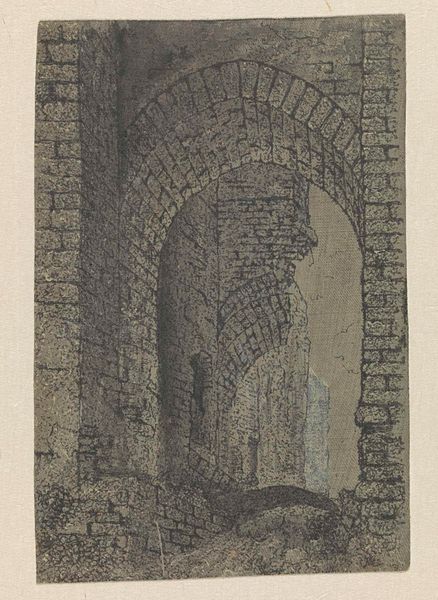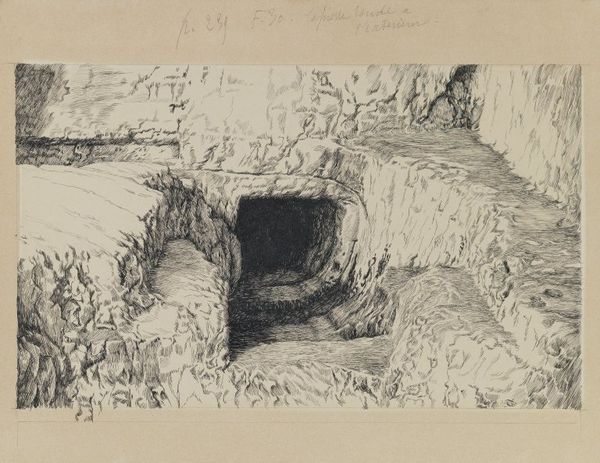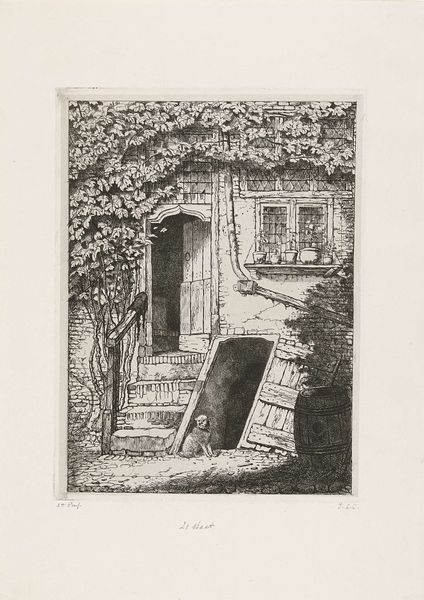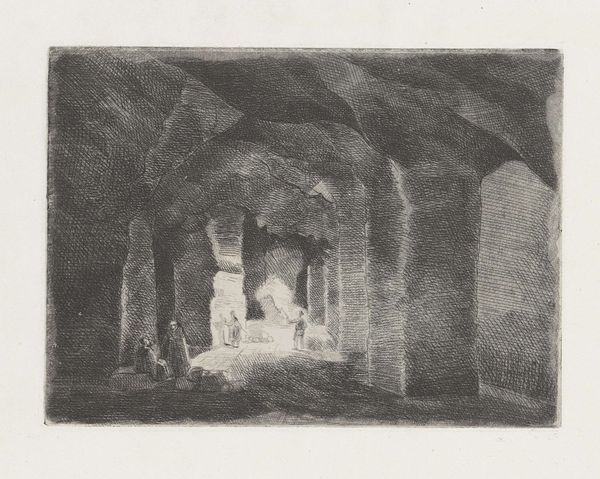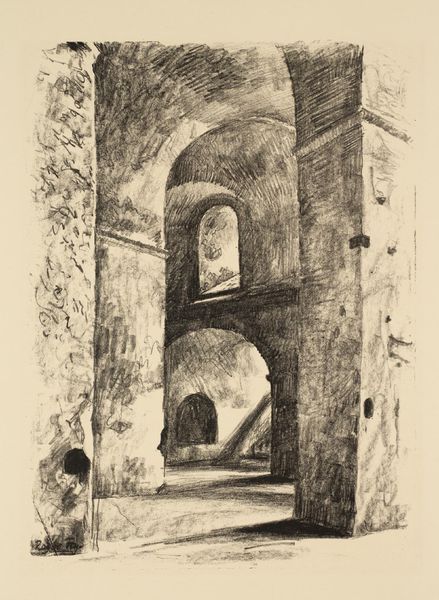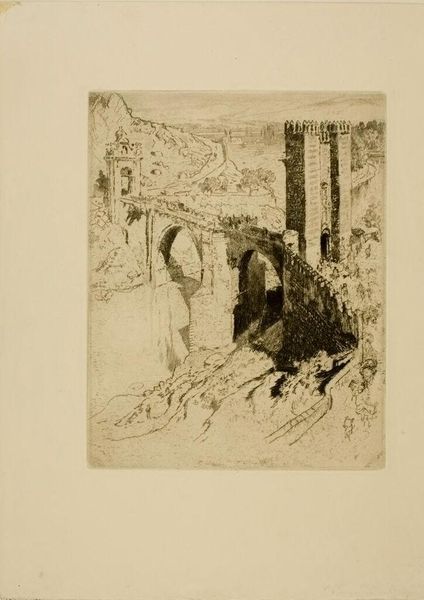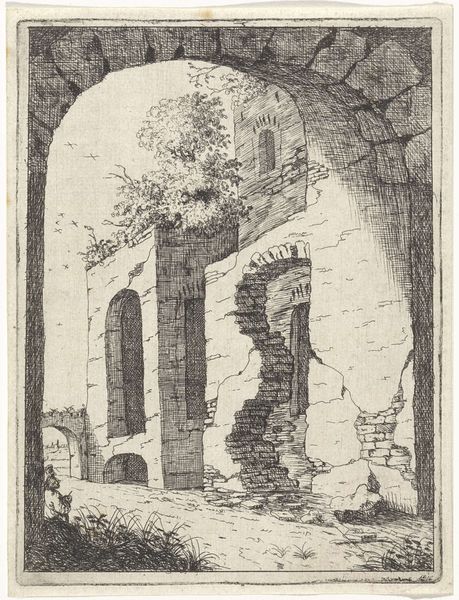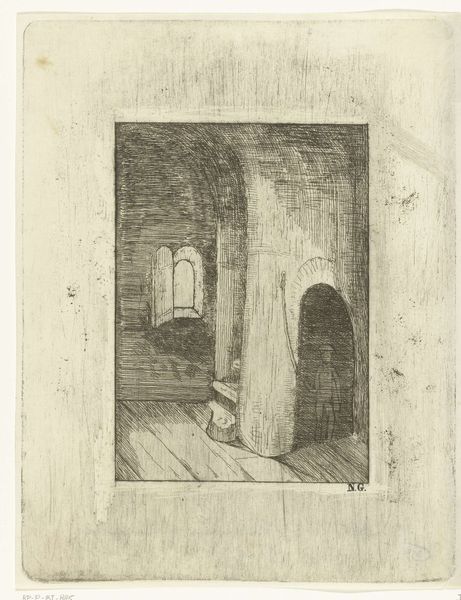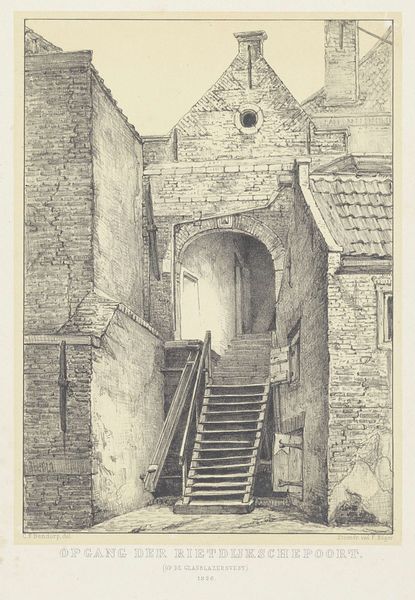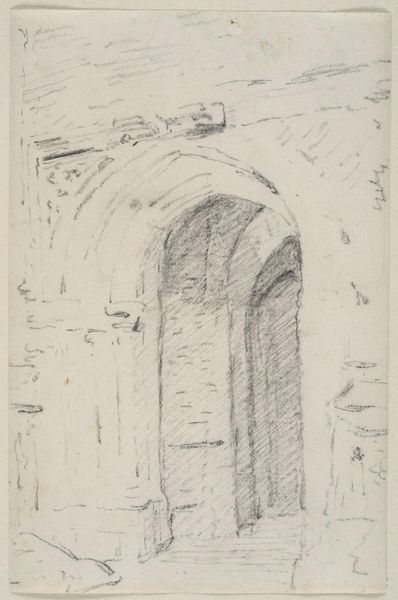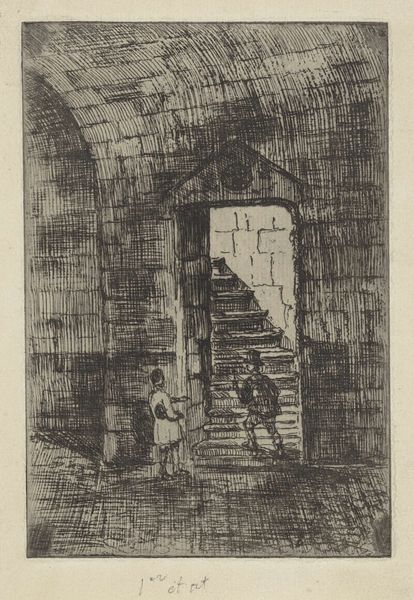
drawing, ink, pen, architecture
#
drawing
#
landscape
#
ink
#
pen-ink sketch
#
arch
#
pen
#
architecture
#
realism
Copyright: Public domain
Curator: Looking at James Tissot's "The Round Stone Seen from the Interior," created around 1889, you can't help but feel drawn into the scene he so meticulously rendered with pen and ink. It's currently part of the Brooklyn Museum's collection. Editor: Wow. My immediate impression is one of… stillness. It's intensely textural but also intensely quiet, like the world's holding its breath. You almost expect to hear an echo, but the silence seems complete. Curator: It’s intriguing how Tissot, known for his society portraits, diverted to this more introspective subject. It presents an interesting turn in his artistic journey. I wonder about the role such a place held culturally and politically. Was this a site of reflection, resistance, or something else entirely? Editor: You know, it feels ancient. Like the start of something and its conclusion all rolled into one view. You can feel the weight of history, but not in an imposing way; it’s more subtle, like whispers. It's like the world is reminding me that our human concerns are really, ultimately, temporary. Curator: Tissot’s precise cross-hatching definitely adds to that sensation of antiquity and solidity. Think about the sheer labor, the commitment, involved in creating this image with nothing but a pen! Editor: Exactly. And that archway! It’s practically begging you to step through, isn’t it? Like an invitation, though to where, who knows? Curator: Or to whom? Considering Tissot’s later works often had spiritual themes, the drawing could have symbolic depth too. The light at the end could have implied rebirth or renewal of faith. Editor: Perhaps the most thought-provoking aspect is the tension between decay and endurance. Stone crumbles, yet endures. Structures shift but continue to stand as stories. What remains important and gets remembered by the world versus what gets swept away. Curator: Precisely! Thank you. That helps underscore the value in historicizing works like this. We get an intimate peek into what persists and changes about not just visual culture, but its role in civic life. Editor: And I like to believe, in feeling some semblance of connection to artists like Tissot from over a century ago, that his work provides us a quiet reminder of who we are as creators.
Comments
No comments
Be the first to comment and join the conversation on the ultimate creative platform.

